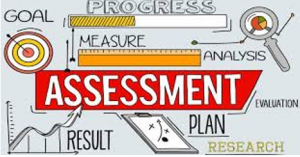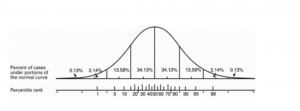Barbreck – A Glimpse into the Classroom
The first of our series of webinars, ‘A Glimpse into the Classroom – How we plan’ aired on Thursday.
With many parents now getting a look into classrooms during this online period and wanting to know more, we are presenting a series of webinars to provide the knowledge, understanding and clarification sought.
The following webinars are included in this series:
- How we plan
- Teaching practice and Pedagogy
- Assessment
- The emphasis on understanding and skill development
The webinars will be published to the School’s YouTube channel after being aired.
We hope you find these informative.
ALL ABOUT ASSESSMENT
 ‘The primary purpose of assessment is to promote learning. Assessment provides evidence of how learners are progressing according to defined standards throughout a period of learning, as well as achievement at the end of the learning period.’ These words quoted from A Teacher’s Guide to Assessment’ form the premise upon which teachers base their understanding of assessment.
‘The primary purpose of assessment is to promote learning. Assessment provides evidence of how learners are progressing according to defined standards throughout a period of learning, as well as achievement at the end of the learning period.’ These words quoted from A Teacher’s Guide to Assessment’ form the premise upon which teachers base their understanding of assessment.
While most of us conjure up terrible memories of assessment where so much relied on the one assessment (usually a pen and paper test), today teachers assess students in many ways and for many reasons continuously across the year.
Formative Assessment
Formative Assessment can be described as ‘assessment for learning’. This type of assessment is used by teachers to inform planning and their teaching. It might take the form of checklists, work analysis, audits, observations, reading running records and end of lesson quick tests e.g. Exit Slip. The information gained is used to determine where the students’ understanding is, whether they can do the task / new learning correctly, to form groups based on similar needs and to inform planning for following lessons.
Summative Assessment
This occurs when teachers use evidence of student learning to make judgements on student achievement against goals and standards. This is usually used at the end of a unit of work to determine the level at which the student was working at the completion of the unit, term or semester. These are the ratings that you will find on your daughter’s End of Semester Report.
Standardised Assessment
Standardised tests are tests that require all students to answer the same set of questions in the same way, for example multiple choice questions or spell these words. Companies that develop these tests have tested them against tens of thousands of students at the same age, thus making possible a comparison of one child’s performance against a large sample. These tests operate using a bell curve.
In the Junior School, we conduct standardised tests for continuing students, usually in October. The tests we use are: The Council of educational Research tests: Progressive Assessment of Maths and Progressive Assessment of Reading. The data from these tests is used to plot student progress and to note areas of strength and areas for improvement across their time in the Junior School. The information gathered from these tests informs program development, planning and groupings for extension or remediation purposes.
References used:
https://www.education.act.gov.au/__data/assets/pdf_file/0011/297182/Teachers-Guide-To-Assessment.pdf
https://www.education.vic.gov.au/school/teachers/teachingresources/practice/Pages/assessment.aspx



